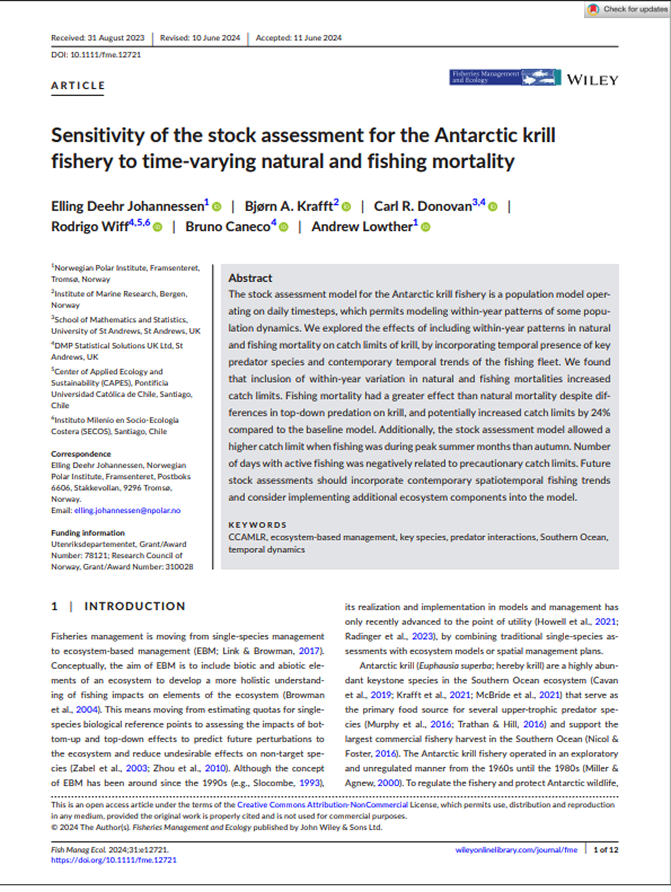Biomass
Fisheries management
Antarctic ecosystem
Climate
Krill (Euphausia superba)
Long-term Trend in Mean Density of Antarctic Krill (Euphausia superba) Uncertain
Summary
This study reexamines conflicting research findings on Antarctic krill population trends in the Southwest Atlantic. Previous analyses of the KRILLBASE dataset had produced contradictory results: one showing significant krill decline (particularly north of 60°S), while another found no significant decline. In this study, Candy reexamines the data using improved statistical methods called a meta-analytic linear mixed model (LMM) approach. The new analysis also incorporates nonlinear effects and climatological temperature data to get a more accurate picture.The improved analysis shows that while there may be some decline in krill density north of 60°S, the uncertainty is too high to draw firm conclusions. The statistical power was too weak to reliably detect even substantial population changes like a 70% decline between 1985-2005.The study concludes that current evidence neither strongly supports nor rejects the idea of dramatic krill decline in the Southwest Atlantic. This highlights how different statistical approaches can lead to very different conclusions about the same ecological data, emphasizing the importance of using appropriate methods and acknowledging uncertainty in environmental research.
Key Findings
1
Previous studies using the same KRILLBASE dataset reached opposite conclusions about krill population trends 2
Using improved statistical methods that account for measurement errors showed that the uncertainty in population trends is much higher than previously thought 3
There may be some decline in krill numbers north of 60°S, but with high statistical uncertainty4
The statistical tests were too weak (only 5-31% chance) to reliably detect even a major 70% drop in krill populations 5
Climatological temperature was a significant predictor of krill density but didn't resolve the uncertainty in long-term trends 

